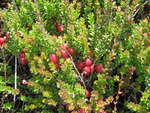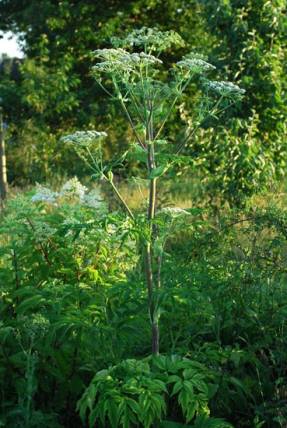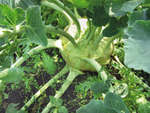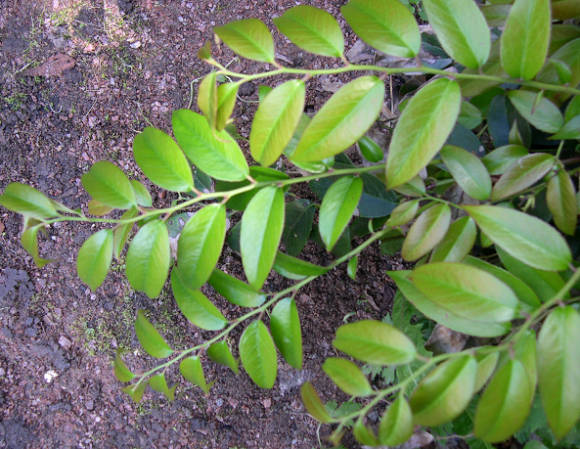The history of the entry of tomatoes into crop production turned out to be very long, for a long time tomatoes were considered poisonous plants. In the Maya, the tomato was an important part of the kitchen. They believed that tomato juice - red like human blood - restores vitality, makes a person stronger. They applied fresh mashed tomatoes to various abscesses and inflammations, as well as hemorrhoids.

Historical data on the medical use of tomatoes are mostly difficult to reproduce. For example, with stars on the face, it was recommended to mix lizard excrement, rus and tomato juice and apply it to the face. There were also quite adequate and justified means from the point of view of modern medicine. For example, it was recommended to mix tomato juice, crushed bell peppers with yellow fruits, crushed pumpkin seeds and agave leaf juice as a general tonic. For asthma and pulmonary diseases, tomatoes were tormented, rubbed and applied to the chest in the form of a hot paste.
The widespread use of ripe fruits in food began only in the last century, after in 1811 there was a report that in Italy they are eaten with pepper, garlic and oil. The example of the Italians was followed by other Europeans - and since then tomatoes have found widespread use in the cuisine of all nations. Tomatoes came to Russia in the middle of the 19th century, they began to be grown in the Crimea as a food plant.
And this is not surprising - in the fruits of the plant, instead of the expected poison, a great many useful substances were found. They contain from 2.01 to 6.50% sugars, nitrogenous substances, from 0.26 to 1.09% organic acids (mainly citric and malic), salts of potassium, phosphorus, iron, vitamins C, B1, B2, P , K. Moreover, there is almost the same amount of vitamin C in tomatoes as in lemons and oranges.

Separately, it should be said about carotenoids. In tomatoes, it is represented mainly by lycopene, consonant with the Latin name of tomatoes. lycopersicum, although he was found even in the rose hips. Oddly enough, there is quite a lot of it in watermelons (of course, if converted to dry weight, it is 1000 ppm). Fresh tomatoes contain about 3.9-5.6 mg of lycopene per 100 g of fruit. Especially a lot of lycopene in tomato paste (62 mg per 100 g). Lycopene has shown itself in vitro to be 100 times more effective antioxidant than vitamin E. Currently, many studies are being carried out to study the oncoprotective properties of lycopene. There is evidence that the accumulation of lycopene in the body reduces the risk of cardiovascular disease, cancer (primarily prostate cancer), and osteoporosis.
Cooked foods (such as tomato juice and canned tomatoes) are healthier in terms of lycopene availability. Cellular integrity is compromised and lycopene is released. Also, the digestibility of lycopene increases dramatically with the addition of fat. After a meal, lycopene is absorbed in the small intestine. The presence of fats and bile acids makes hydrophobic lycopene capable of penetrating the cells of the intestinal mucosa by a passive transport mechanism. But lycopene, like all carotenoids, does not like light, so it is better to store jars of juice in the dark.
Lycopene is used as a food coloring. It is not toxic, but there have been isolated cases when the skin acquired a yellowish tint after a serious "overeating" of tomatoes. This phenomenon has even received a medical name - lycopinoderma. However, if you remove tomatoes from the diet, then everything goes away quickly.

Tomatoes are eaten raw, boiled, fried, pickled, salted. Salads, sauces, seasonings are prepared from them. They are canned in large quantities, tomato paste and juice are prepared, which preserve the nutritional properties of fresh fruits. In principle, it is not difficult to prepare tomato juice on your own, although there is no shortage of it on sale.To do this, pour boiling water over ripe fruits, peel them off, cut into pieces and squeeze the juice through cheesecloth. To improve the separation of juice when storing it for future use, and to eliminate the taste of raw tomatoes, you can use another method (see Tomato juice). And tomato paste can be prepared according to the following recipe: Tomato paste.
Experimental and clinical studies have established that pounded tomatoes and juice have a destructive effect on certain types of microbes that cause suppuration of wounds. Moreover, it turned out that the antibacterial effect of raw tomatoes, pounded in the form of gruel, is stronger than the juice squeezed out of them. However, it is more convenient to use juice for treatment. Cases of its successful use for the treatment of purulent wounds and ulcers are known to medical practice. This effect of tomatoes is due to the phytoncides they contain. By the way, the activity of phytoncides in tomatoes is so high that they are sometimes used in the fight against pests of garden plants.

Until recent years, it was believed that there is a lot of oxalic acid in tomatoes, an excess amount of which can be deposited in the body in the form of oxalate stones or stimulate the development of a noble disease - gout. Some older books recommended excluding tomatoes from the diet of older people. In fact, tomato contains not very much oxalic acid, much less than it is present in sorrel, spinach, potatoes, and beets. It was also found that tomatoes are less than many plant foods, purines - protein metabolism products that contribute to the development of gout. Therefore, tomatoes can now be safely included in the diet of children, adults and the elderly. Due to the presence of vitamins and potassium salts, tomatoes are recommended for patients with impaired metabolism, as well as for diseases of the cardiovascular system. Since tomatoes are distinguished by their delicate fiber, they are useful for gastrointestinal diseases.








